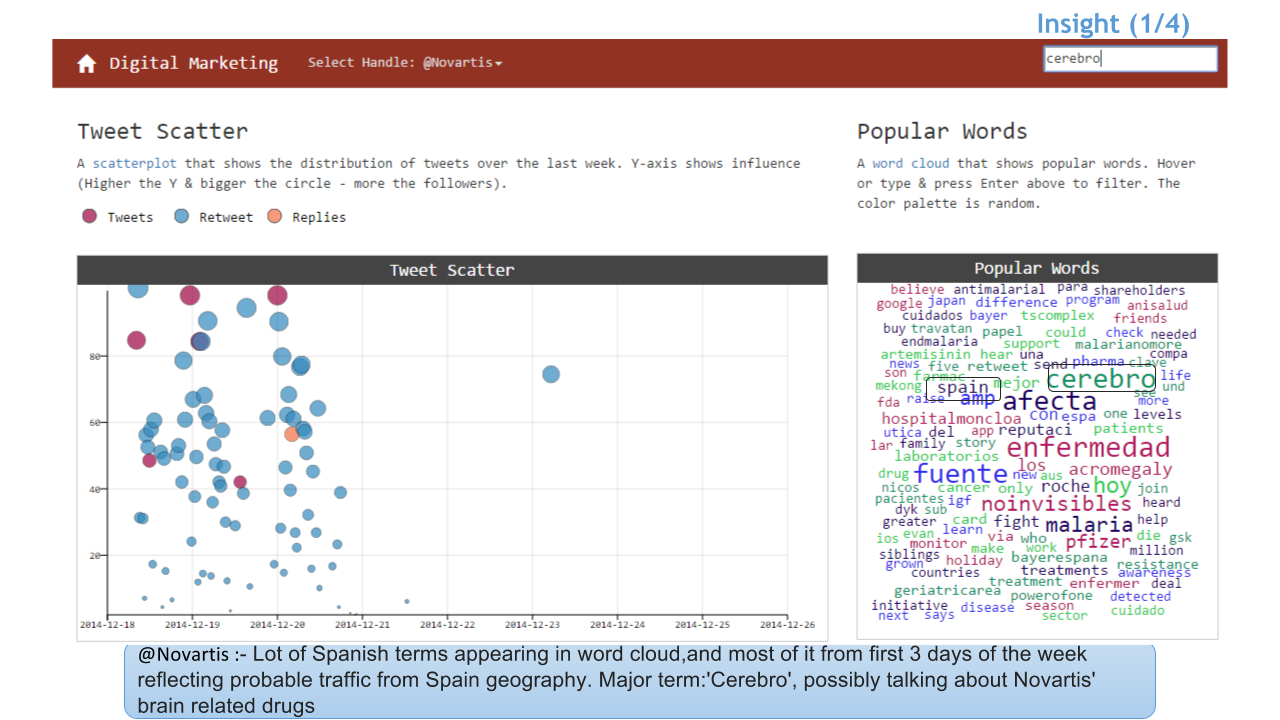Vitamin D deficiency in children can have adverse health consequences, such as growth failure and rickets. In 2008, the American Academy of Pediatrics increased its recommended daily intake of vitamin D in infants, children, and adolescents to 400 IU. Infants who are breastfed and children and adolescents who consume less than 1 L of vitamin D–fortified milk per day will likely need supplementation to reach 400 IU of vitamin D per day. This recommendation is based on expert opinion and recent clinical trials measuring biomarkers of vitamin D status. It is also based on the precedent of preventing and treating rickets with 400 IU of vitamin D.
In addition to dietary sources, exposure to ultraviolet B sunlight provides children and adults with additional vitamin D. Although the American Academy of Pediatrics recommends keeping infants out of direct sunlight, decreased sunlight exposure may increase children's risk of vitamin D deficiency. No randomized controlled trials assessing patient-oriented outcomes have been performed on universal vitamin D supplementation. However, vitamin D may reduce the risk of certain infections and chronic diseases. Physicians should help parents choose the appropriate vitamin D supplement for their child. Overall, MVMs do not appear to reliably reduce the risk of chronic diseases when people choose to take these products for up to a decade or when studies randomize people to take them as part of a clinical trial.
In 2021, after another review of studies published since 2013, the USPSTF concluded that the evidence is still insufficient to weigh the benefits and harms of MVM use to prevent CVD or cancer . The American Institute for Cancer Research recommends against taking dietary supplements for cancer prevention because supplements do not provide the same benefits as eating whole foods . Similarly, the American Heart Association advises against the use of MVMs to prevent CVD because scientific studies have found them to be of no value for this purpose .
Note that many children's multivitamin/mineral supplements on the market contain more than the RDA for several micronutrients when taken at the suggested dosage by age. Some even contain micronutrients (e.g., vitamin A, folic acid, copper, and zinc) at levels equivalent to the UL; this concern is for children younger than 9 years old. The Food and Nutrition Board of the Institute of Medicine recommends that daily nutrient intake from food and supplements not exceed the UL for each micronutrient.
There is no evidence that consumption of micronutrients at or above the UL results in any health benefits in children, and the UL should not be exceeded except under medical supervision. It is also important to note that the daily values listed on supplement labels in the US do not reflect the current intake recommendations . Another caution is that many children's supplements look like candy but should never be labeled as such and, because of safety concerns, should be kept out of reach of children. Furthermore, investigators define MVMs differently in their studies to evaluate the potential health effects of these products. One team of researchers categorized MVMs more ambiguously as "stress-tab-type," "therapeutic type," and "one-a-day type," so these products probably included MVs as well . Another team defined MVMs as "full-spectrum" products providing all 12 vitamins plus 10 minerals .
Some published reports of studies of dietary supplements use the generic term "multivitamins" to include products with and without minerals. Various government surveys of dietary supplements and popular food-frequency questionnaires also define MVs and MVMs differently, include different examples, or ask about different products. Vitamin C has a number of important roles during growth and development, including being required for the synthesis of collagen, carnitine, and neurotransmitters . Vitamin C is also a highly effective antioxidant and is important for immunity . Further, vitamin C strongly enhances the absorption of non heme iron by reducing dietary ferric iron (Fe3+) to ferrous iron (Fe2+) and forming an absorbable, iron-ascorbic acid complex.
Specifically, iron absorption is 2- to 3-fold higher with co-ingestion of 25 to 75 mg of vitamin C . This has special relevance to child health, considering the fact that iron deficiency is the most common nutrient deficiency in the world . Vitamin C intake recommendations for children are extrapolated from recommendations for adults based on relative body weight.
The RDA for children ages 4 to 8 years is 25 mg/day, and the RDA for boys and girls ages 9 to 13 years is 45 mg/day . For information on food sources, see the article on Vitamin C. Taking a basic MVM that provides nutrients in amounts that are approximately the same as recommended intakes should be safe for healthy people. Studies of MVM users reveal no adverse effects, except that both treatment and placebo groups in some studies experienced some minor gastrointestinal issues .
However, individuals who take MVMs and other supplements and who consume fortified foods and beverages might obtain some nutrients in amounts exceeding the UL, increasing the possibility of adverse effects . Excess intakes can also be a concern for people taking MVMs that contain some vitamins or minerals in amounts approaching or exceeding the UL. A cross-sectional analysis of a nationally representative sample of 1,003 pregnant U.S. people aged 20 to 40 years from the 2001–2014 NHANES found that many consumed less than recommended amounts of many nutrients from diet alone . Among the 69.8% who took a dietary supplement , the risk of inadequate intakes of many nutrients was lower. For example, 27.7% had inadequate intakes of vitamin A from foods alone, but this rate dropped to 15.5% when supplements were included. However, supplement use increased the proportion of pregnant people with some intakes of iron (27.9%) and folic acid (33.4%) above the UL.
The DGA does not mention MVMs, but it does recommend that Americans choose healthy, nutrient-dense food and beverages. The DGA lists nutrients of special public health concern in American diets, such as calcium, potassium, dietary fiber, and vitamin D in both adults and children. Iron is also a nutrient of public health concern for infants ages 6–11 months who are fed primarily human milk and do not consume enough iron from complementary foods, adolescent females, and people who are pregnant.
Depending on their formulations, MVMs can help individuals obtain adequate amounts of these nutrients, except for potassium and dietary fiber. Other RCTs have evaluated the effects of MVMs on outcomes in individuals with a range of chronic diseases. The supplement did not reduce incidence or mortality rates for esophageal cancer or the rate of mortality from any cause. Some evidence from RCTs has focused on the use of MVMs to reduce the risk of various chronic diseases.
Use of MVs and MVMs (products containing three or more vitamins and/or minerals in amounts below the ULs and no herbs) did not reduce the risk of any chronic disease. One of the largest prospective studies of MVM use was the Women's Health Initiative, which evaluated the health of 161,808 postmenopausal women aged 50–79 years and their risk factors for cancer, heart disease, and osteoporosis. Investigators who followed a multiethnic cohort of 182,099 men and women aged 45–75 years living in Hawaii and California for an average 11 years found similar results . Approximately 48% of the men and 52% of the women in this study reported taking an MV or MVM. Several studies have failed to demonstrate a relationship between vitamin D status and the risk of developing type 1 diabetes, the form of diabetes that is most common in children. In addition, the idea that vitamin D supplements may prevent type 2 diabetes, the form of diabetes common in older children and adults, was recently dealt a blow in a rigorous study of adults.
In June 2019, a National Institutes of Health-funded study of 2,423 adults reported that daily vitamin D supplements failed to prevent type 2 diabetes. By contrast, a more recent study published in 2020 examined the collective effect of nine randomized clinical trials that tested the ability of vitamin D supplements to prevent progression from prediabetes to type 2 diabetes. Overall, there was no benefit, but when only the trials that used moderate to high doses of supplementation (≥1000 IU/day) were assessed, there was a small 12% reduction of risk compared to placebo. While many young children are picky eaters, that doesn't necessarily mean that they have nutritional deficiencies. Many common foods — including breakfast cereal, milk and orange juice — are fortified with important nutrients, such as B vitamins, vitamin D, calcium and iron. So your child may be getting more vitamins and minerals than you think.
A healthy diet in children is important to provide nutrients that support optimum physical growth and cognitive development and to also establish healthy eating behaviors that lower risk of chronic diseases in adulthood. The mineral fluoride is important for the prevention of dental caries . Specific cariogenic (cavity-causing) bacteria found in dental plaque are capable of metabolizing certain carbohydrates and converting them to organic acids that can dissolve tooth enamel. If unchecked, the bacteria may penetrate deeper layers of the tooth and progress into the soft pulp tissue at the center. Untreated caries can lead to severe pain, local infection, tooth loss or extraction, nutritional problems, and serious systemic infections in susceptible individuals . Increased fluoride exposure, most commonly through water fluoridation, has been found to decrease dental caries .
Fluoride consumed in water appears to have a systemic effect in children before teeth erupt, as well as a topical effect in children and adults after teeth have erupted. The AI of fluoride for children ages 4 to 8 years is 1 mg/day, and the AI for boys and girls ages 9 to 13 years is 2 mg/day. For information about sources of fluoride, see the article on Fluoride. Basic MVMs contain both vitamins and minerals, most in amounts that do not exceed the DVs. However, MVMs often have small amounts of certain nutrients, such as calcium, magnesium, and potassium, so supplement users should check product labels. When choosing an MVM product, consumers should consider taking a product designed for people of their age, sex, and life stage (e.g., pregnancy).
MVMs for "senior" men and women, for example, often contain little or no iron and more calcium, vitamin D, and vitamin B12 than MVMs for younger adults . Prenatal supplements generally provide no vitamin A in the form of retinol, and most children's MVMs provide age-appropriate amounts of nutrients. One well-known trial of the impact of MVMs on both chronic disease risk and mortality used combinations of antioxidant nutrients.
After 7.5 years of use, the supplements lowered total cancer incidence by 31% and all-cause mortality rates by 37% in men but not women. The RDA for children ages 4 to 8 years is 5 mg/day, and the RDA for boys and girls ages 9 to 13 years is 8 mg/day . Shellfish, beef, and other red meats are rich sources of zinc. Zinc bioavailability is relatively high in meat, eggs, and seafood because of the relative absence of compounds that inhibit zinc absorption and the presence of certain amino acids that enhance zinc absorption.
The zinc in whole-grain products and plant proteins is less bioavailable due to their relatively high content of phytic acid, a compound that inhibits zinc absorption . The enzymatic action of yeast reduces the level of phytic acid in foods. Therefore, leavened whole-grain breads have more bioavailable zinc than unleavened whole-grain breads . The RDA of magnesium for children ages 4 to 8 years, which is 130 mg/day, was derived by extrapolating data from magnesium balance studies in older children . The RDA for boys and girls ages 9 to 13 years is 240 mg/day. This recommendation was based on data from magnesium balance studies in children of this age .
Good dietary sources of magnesium include nuts and green leafy vegetables because magnesium is part of chlorophyll — the green pigment in plants. Meats and milk have an intermediate magnesium content, with milk providing mg per cup . Analysis of data from the NHANES study found that US children ages 2 to 12 years who consumed three or more daily servings of whole grains had significantly increased magnesium intakes .
Smokers and, possibly, former smokers should avoid MVM products providing large amounts of beta-carotene or vitamin A because two studies have linked these nutrients to an increased risk of lung cancer in smokers . The FNB advises people older than 50 years to obtain recommended amounts of vitamin B12, mainly from fortified foods or dietary supplements. Adults in this age group might not be able to absorb enough of the protein-bound, naturally occurring vitamin B12 in food because gastric acidity tends to decline and atrophic gastritis tends to become more common with age . The DGA also recommends obtaining recommended amounts of vitamin B12 primarily from fortified foods or dietary supplements, but only for people ages 60 and older. The DGA adds that the use of some medications can decrease absorption of vitamin B12 in foods .
Iron is stored in the body as ferritin, and serum level of ferritin is a good clinical indicator of iron status in children . Iron deficiency, which is the most common nutritional deficiency in the world, is a major public health problem, especially in developing nations, but it is also prevalent in industrialized nations. Severe iron deficiency leads to iron-deficiency anemia, which affects more than 30% of the global population . Iron-deficiency anemia results when there is inadequate iron to support normal red blood cell formation. The anemia of iron deficiency is characterized as microcytic and hypochromic, meaning red blood cells are measurably smaller than normal and their hemoglobin content is decreased. At this most severe stage of iron deficiency, symptoms may be a result of inadequate oxygen delivery due to anemia and/or sub-optimal function of iron-dependent enzymes.
Low red cell count, low hematocrit, and low hemoglobin concentrations are all used in the clinical diagnosis of iron-deficiency anemia . For details regarding the clinical diagnosis of iron-deficiency anemia, see Chapter 4 in the book, Nutritional Anemia, which is available through the Sight and Life website. The Physicians Health Study II was the longest clinical trial to investigate whether MVMs might help prevent chronic disease. The study randomly assigned 14,641 male physicians in the United States aged 50 and older to take a daily MVM or placebo for a median of 11.2 years. Participants who took the MVM did not have fewer major cardiovascular events, myocardial infarctions, strokes, or cardiovascular-related deaths than nonusers . MVM supplementation modestly but significantly reduced users' risk of developing cancer by 8% but did not reduce the risk of any type of cancer (e.g., of the prostate or colon) or overall cancer mortality .
The supplement also had no effect on cognitive decline with age . In addition, the supplement reduced the risk of cataracts by 9% but did not help prevent AMD . Clinical trials, where individuals are randomly assigned to take the dietary supplement or a placebo, are better than observational studies for determining whether MVMs might affect disease risk. However, few randomized clinical trials have been conducted because these studies need to be long enough to show effects on disease risk that go beyond simply identifying intermediate biomarkers that might suggest such risk. As with some observational studies, some RCTs have suggested that MVM use has potential health benefits, but others have found no such benefits.
However, no two RCTs have used MVMs with the same combinations and amounts of nutrients. In Canada, almost all prenatal MVM supplements provide 1,000 mcg/day of folic acid. Even in the United States, the amount of folic acid in prenatal MVM supplements is typically 800 or 1,000 mcg, which is much higher than the recommended amount to reduce the risk of neural tube defects in babies .
There are certainly diseases caused by a lack of specific nutrients in the diet. Classic examples include scurvy , beri-beri , pellagra , and rickets . But these conditions are rare in the U.S. and other developed countries where there is generally more access to a wide range of foods, some of which are fortified with vitamins. Individual vitamin supplementation may also be essential in certain cases, such as a deficiency caused by long-term poor nutrition or malabsorption caused by the body's digestive system not functioning properly. A yummy chewable multivitamin, the Solgar Kangavites Vitamin tablets are available in a sweet berry flavor. A blend of multivitamins and minerals, the Solgar multivitamin tablets give your teens the recommend DV every day.
Like other multivitamins, these are just dietary supplements and are best taken just before or after food. Teenagers can take one tab in the morning with breakfast, and the other in the evening for optimal results. Adding a variety of foods to a teen's diet can help her get what she needs, and supplementing with multivitamins may benefit some teens. Vitamins in small quantities are essential for normal metabolism. Our bodies don't make them, so we must get them from a well-balanced diet. The American Academy of Pediatrics advises that children who receive a well-balanced diet do not need extra vitamin intake over and above the recommended dietary allowances .
More than one-third of children in the U.S. take dietary supplements routinely. Although myelination primarily occurs during fetal development and early infancy, it continues through childhood, adolescence, and stages of early adulthood . Because of the role of vitamin B12 in myelination and other metabolic processes, it is important for children to meet dietary intake recommendations. The RDA of vitamin B12 for children ages 4 to 8 years is 1.2 μg/day, and the RDA for boys and girls ages 9 to 13 years is 1.8 μg/day. This vitamin is naturally present only in animal products, such as meat, poultry, fish , and to a lesser extent in milk, but it is not generally present in plant products or yeast .
Thus, children who have vegan diets need supplemental vitamin B12 or need adequate intake from fortified foods. Vitamin C helps your body absorb iron, a mineral that facilitates the transportation of oxygen through your blood stream and helps regulate cell growth. Vitamin C helps to keep your cells healthy and, as an antioxidant, may protect you from illness. The recommended daily intake is 75 milligrams of vitamin C for teen boys and 65 milligrams for teen girls. Population-based studies suggest that people who eat foods rich in antioxidants, including vitamin C, have a lower risk of high blood pressure than people who have poorer diets.
Eating foods rich in vitamin C is important for your overall health, especially if you are at risk for high blood pressure. The diet physicians most frequently recommend for treatment and prevention of high blood pressure, known as the DASH diet, includes lots of fruits and vegetables, which are loaded with antioxidants. Mild zinc deficiency contributes to impaired physical growth in children . Significant delays in linear growth and weight gain, known as growth retardation or failure to thrive, are common features of mild zinc deficiency in children. In the 1970s and 1980s, several randomized, placebo-controlled studies of zinc supplementation in young children with significant growth delays were conducted in Denver, Colorado.
Modest zinc supplementation (5.7 mg/day) resulted in increased growth rates compared to placebo . More recently, a number of larger studies in developing countries observed similar results with modest zinc supplementation. A meta-analysis of growth data from zinc intervention trials recently confirmed the widespread occurrence of growth-limiting zinc deficiency in young children, especially in developing countries . Teens need vitamins and nutritional supplements to develop into healthy and powerful adults. The deficiency of one of those critical vitamins and minerals may cause a number of health problems.

























